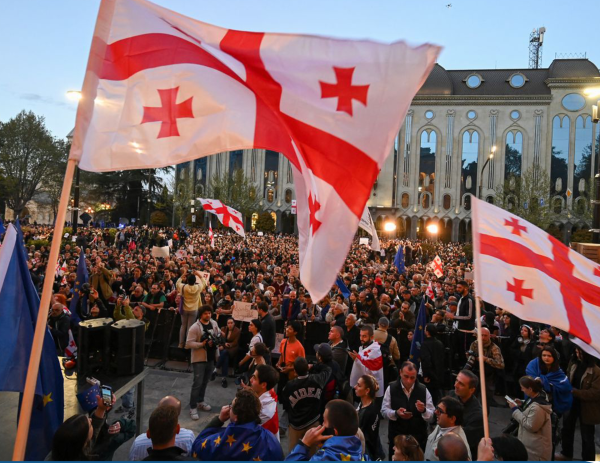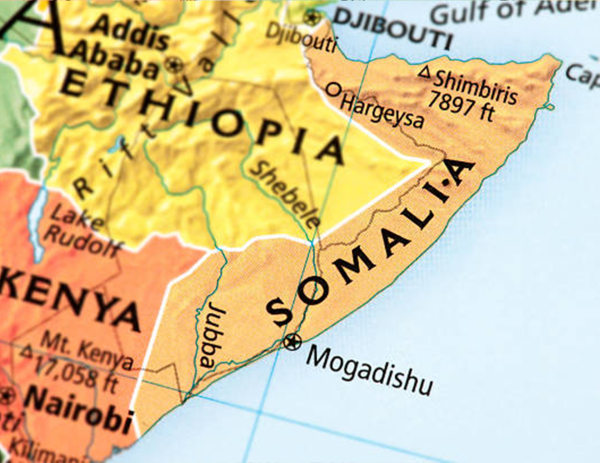Karabakh after war: Mapping post-conflict reconstruction
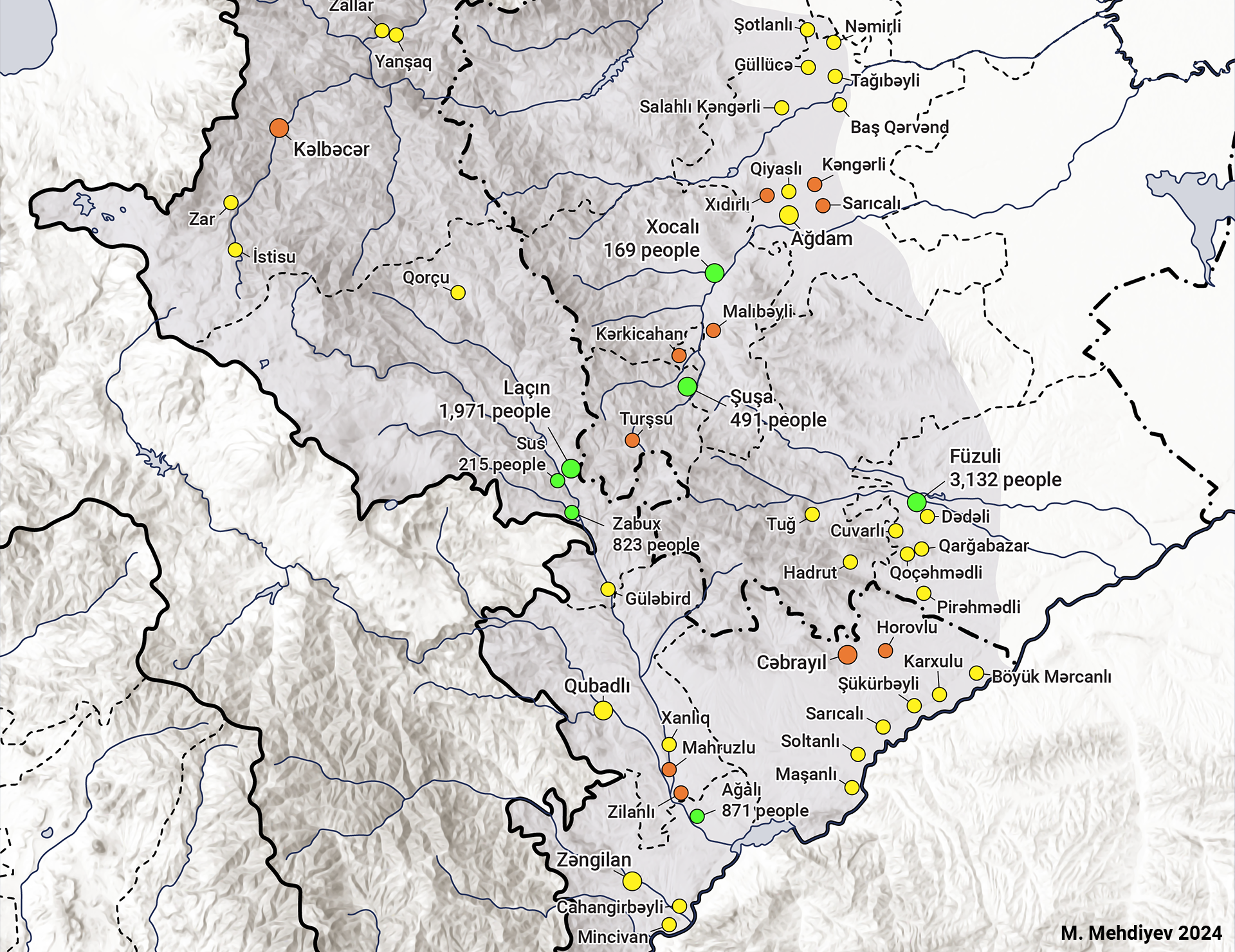
In the summer of 2022, Azerbaijan began resettling its first village in Karabakh*, a region in its southwest that had been under Armenian control for about 30 years and was partially recaptured during the 2020 war. Since a war in the 1990s, the predominantly Armenian-populated mountainous parts of Karabakh, as well as seven Azerbaijani-majority districts in the region, had been held by Armenian forces. During this period, the Azerbaijani populations of these settlements, including seven cities and hundreds of villages, were expelled, and their homes were looted and reduced to rubble.
Following Azerbaijan’s partial recapture of the region in 2020 and its full recapture in 2023, the country has invested heavily in the reconstruction of the villages and cities that were once home to around 500,000 Azerbaijanis. In 2024, Azerbaijan allocated approximately 2.4 billion dollars to the reconstruction efforts in Karabakh.
This article will explore what Azerbaijan has accomplished so far and its vision for Karabakh in the near future. It includes maps that illustrate the progress in resettlement and reconstruction efforts in the region.
Resettlement efforts
After experimenting with resettlement first in the newly created Ağalı village in its southwestern Zangilan District, Azerbaijan started resettling other parts of Karabakh. Since then, Azerbaijan has resettled four cities—Laçın, Füzuli, Şuşa, and Xocalı—in that order, along with three more villages: Talış, Zabux, and Sus. Additionally, plans are in place to resettle two more cities and ten more villages by the end of this year.
With over 500 abandoned villages scattered across the formerly Armenian-controlled region, some in very remote mountainous areas with fewer than 100 former inhabitants, it is unlikely that Azerbaijan will reconstruct each village individually. Instead, it plans to merge several nearby villages into larger ones. We have already seen this approach in Ağalı, which is built upon the ruins of the former villages of İkinci Ağalı and Üçüncü Ağalı and presumably includes resettlers from Birinci Ağalı village as well.
The general plan for the region, released in 2022, indicates that most abandoned villages will remain so, with their original inhabitants moving to larger nearby villages. Given that the former villages are entirely in ruins, Azerbaijan is essentially building entirely new settlements. Interestingly, the general plan also suggests that the city of Qubadlı (Gubadly), which was home to around 6,000 people before the first war, will be rebuilt not in its original location but a little further south. This new location would make the city harder to observe from the Armenian border, thus providing more security. This highlights the various considerations that go into the planning of these settlements, beyond just the logistical aspects.
Map 1. Area of modern Ağalı village during and after Armenian control
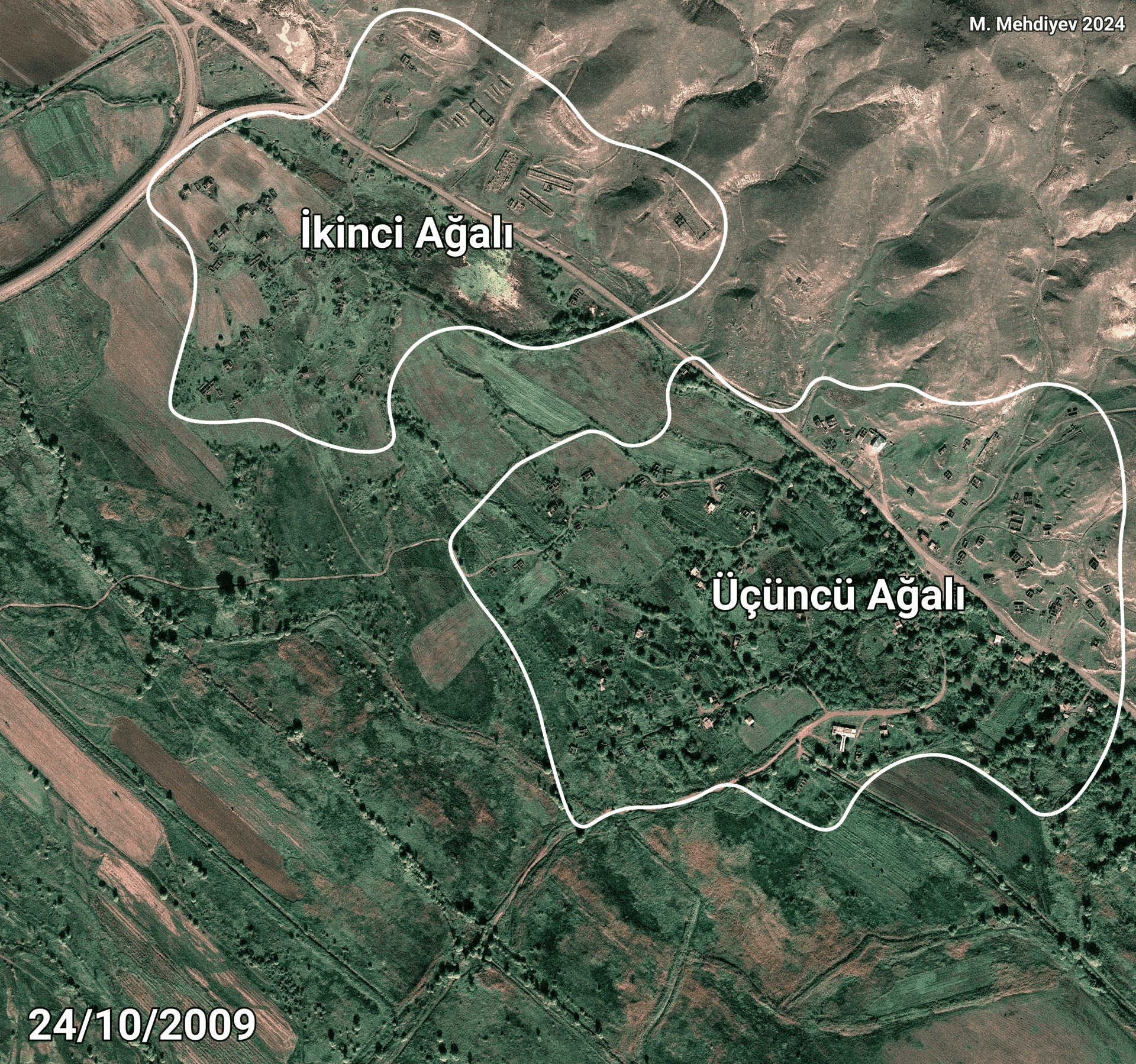
So far, in addition to the villages already repopulated and those planned to be repopulated this year, 32 more settlements, including three cities, are still under construction and will be repopulated after 2024. According to Azerbaijani President Ilham Aliyev, the number of returned inhabitants in Karabakh is expected to reach 20,000 by the end of this year (up from around 8,000 currently resettled), and by 2026, 140,000 internally displaced people are expected to return to Karabakh. The largest city to be built is Ağdam (Aghdam), which will almost triple in size compared to its original state and become the largest city in the region. This is reminiscent of the period before the first war when Ağdam was one of the largest cities and the main trading hub of the region.
Several countries have contributed to the reconstruction efforts in Karabakh. Uzbekistan built a large school in the city of Füzuli (Fuzuli), while Kazakhstan is constructing a “Center for the Development of Creativity” in the same city. Meanwhile, Hungary has taken on the responsibility of rebuilding the village of Soltanlı in southern Karabakh, and Slovakia is rebuilding the village of Baş Qərvənd in eastern Karabakh.
Map 2. Resettlement progress in Karabakh
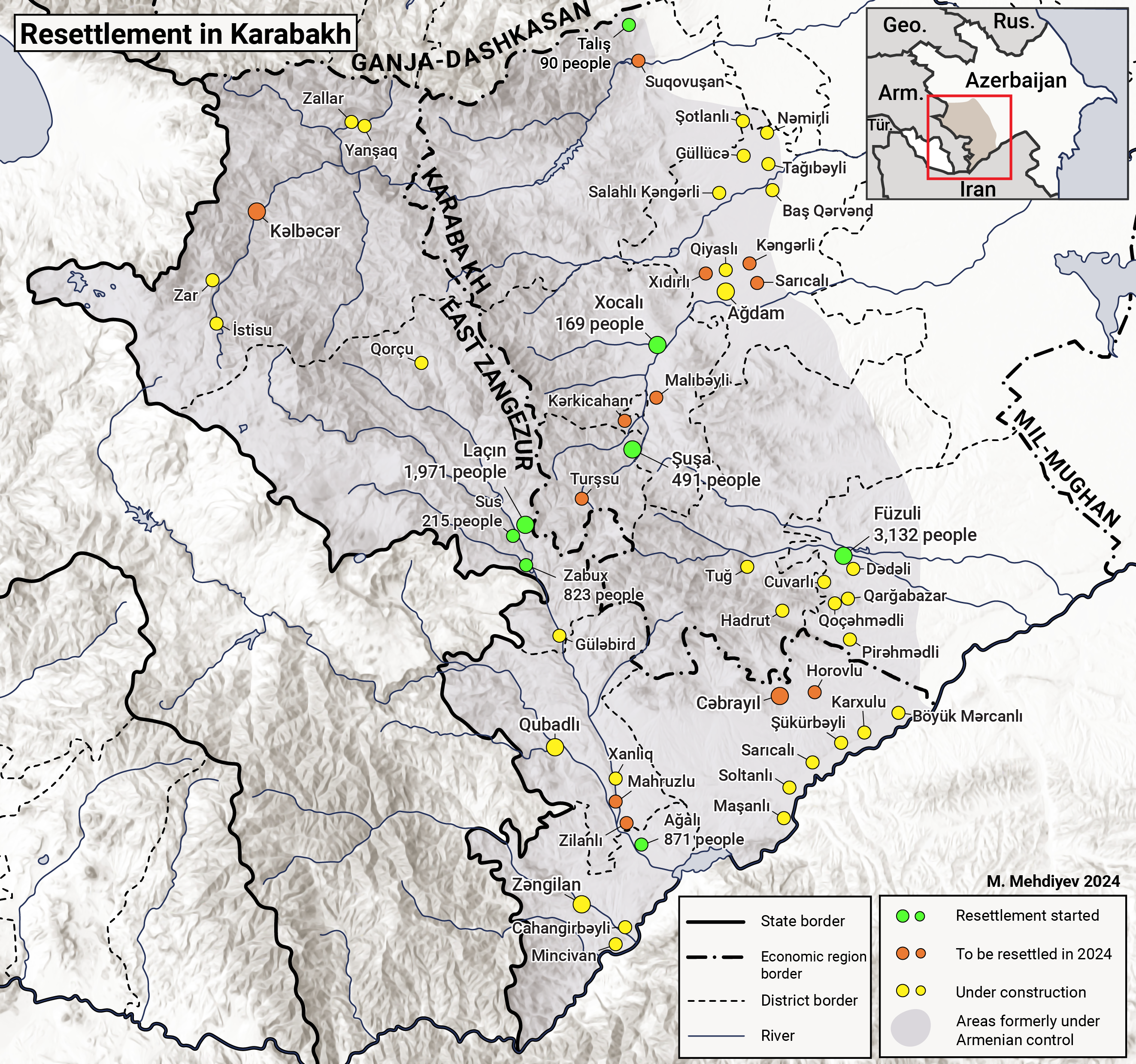
Transportation network
After recapturing most of Karabakh in 2020, Azerbaijan immediately prioritized investment in its road network. During Armenia’s 27-year control, much of the area, except for the Armenian-inhabited mountainous parts, had been left in ruins, rendering most regions inaccessible. Azerbaijan views Karabakh as integral to its broader vision of regional connectivity, aiming to link the East and West through the Middle Corridor. Therefore, special emphasis is placed on developing the road and railway networks in this region, with Turkey playing a key role as most roads and tunnels are being built by Turkish companies.
Map 3. Road network in Karabakh
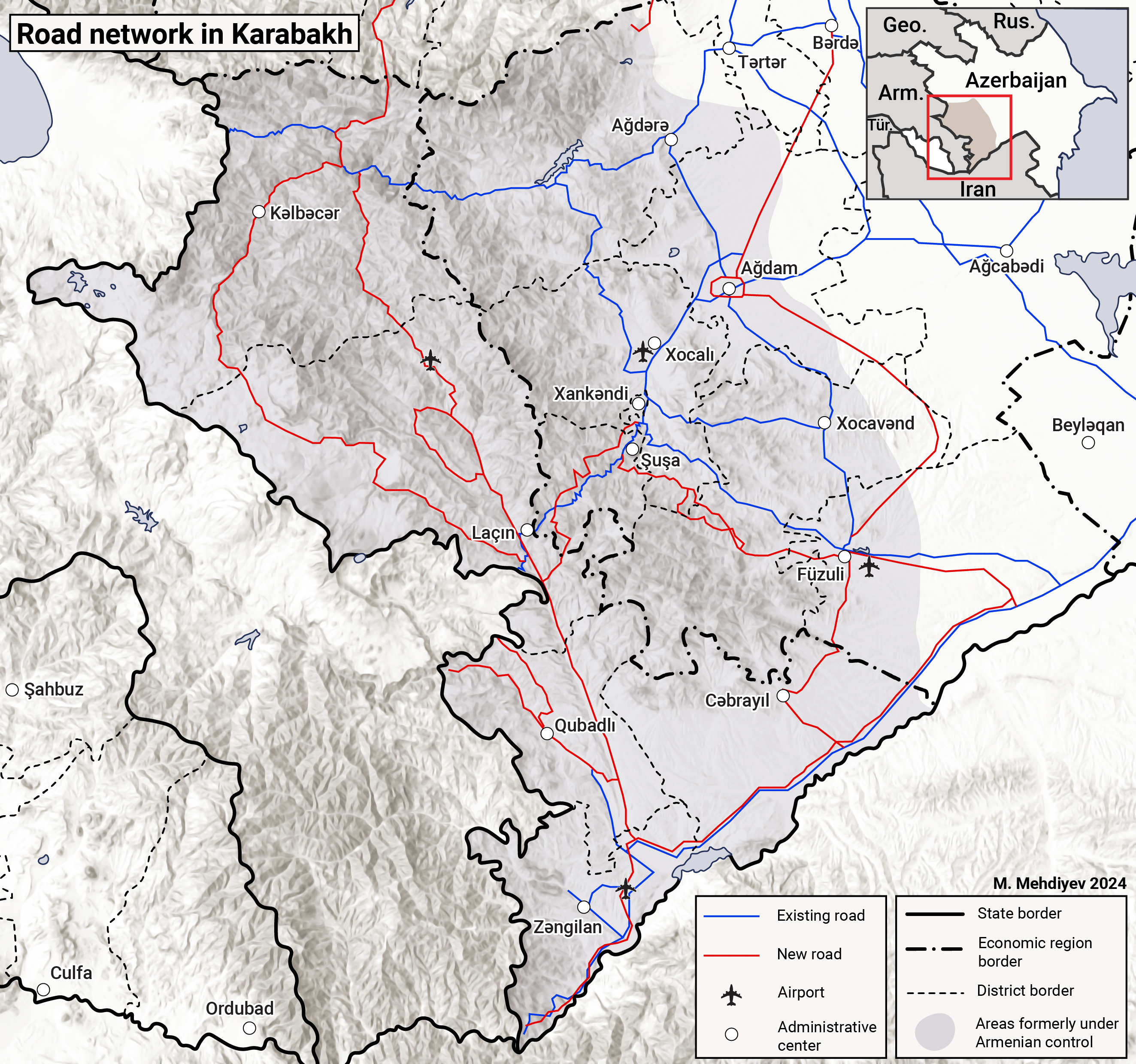
The most crucial piece of transportation in the region is the railway along the southern border of Azerbaijan, intended to connect the mainland with its exclave of Nakhchivan through Armenia. This route, dubbed by the Azerbaijani President as the “Zangezur corridor,” has sparked significant disputes, particularly regarding control over traffic. According to the trilateral ceasefire agreement that ended the 2020 war, Russia should control the traffic through the corridor and provide Azerbaijan with unhindered access. However, Armenia has stated that this arrangement infringes on its sovereignty and insists on having its own troops on the road. These disagreements remain a major obstacle to a full peace deal between Armenia and Azerbaijan.
Map 4. Railways in Karabakh
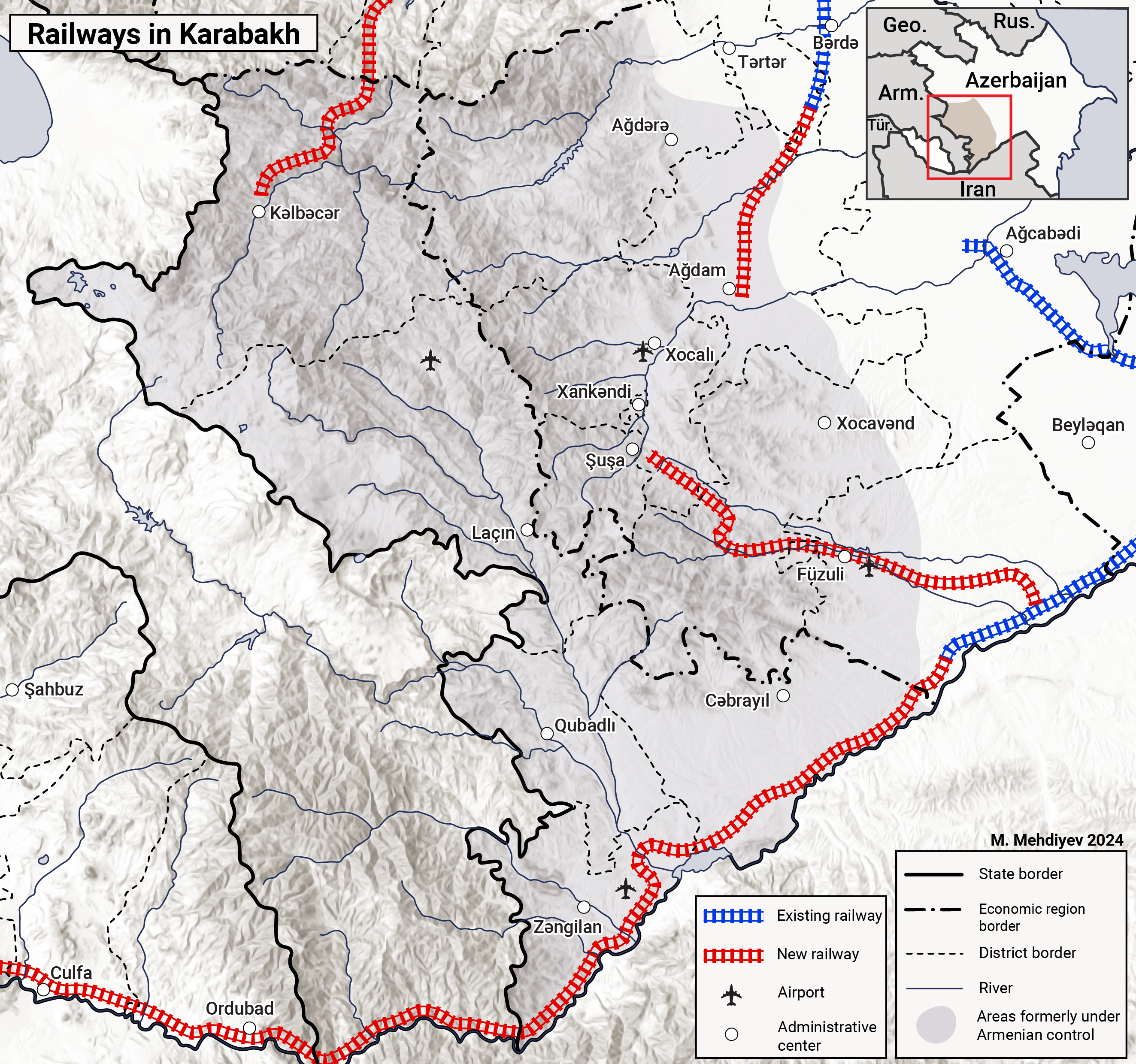
Another way Azerbaijan plans to enhance connectivity within Karabakh is through the construction of new airports. During the Soviet era, the entire region relied on a single airport in the city of Xocalı (Khojaly). Since reclaiming the area, Azerbaijan has initiated the construction of three new airports. While some economists view this as excessive, these airports could benefit local tourism and businesses if managed correctly. Two of the three new airports are already completed and operational. The third airport, located in the mountainous terrain of the northern Laçın (Lachin) district, presents a significant construction challenge due to the difficult landscape.
In conclusion, Azerbaijan’s efforts in the reconstruction and resettlement of Karabakh represent a significant endeavor aimed at restoring communities and infrastructure devastated by decades of conflict. International contributions from countries like Uzbekistan, Kazakhstan, Hungary, and Slovakia underscore the collaborative effort towards this goal. As the region looks towards the future, the success of these reconstruction and resettlement efforts remains to be seen. A successful reconstruction would set a precedent for other war-torn countries like Ukraine and Palestine, highlighting the potential for recovery and renewal after prolonged conflict.
* In this article, "Karabakh" refers to all territories previously under the control of Armenian forces since the First Karabakh War, including the East Zangezur economic region and parts of the Karabakh economic region.





